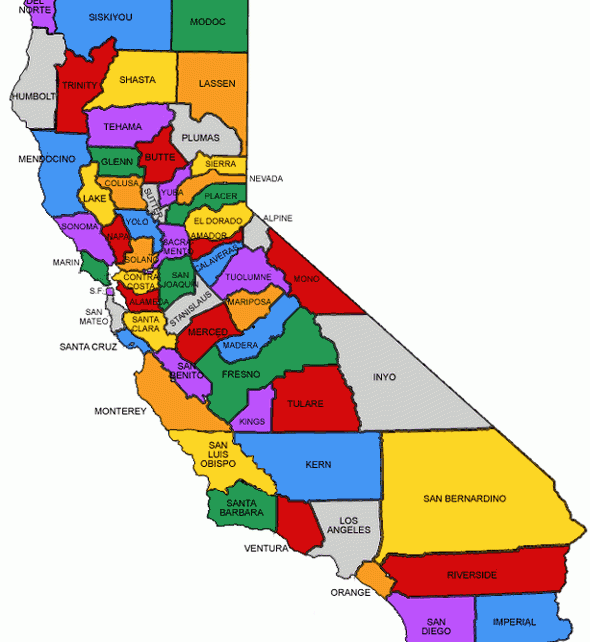
Trying to find out how many counties California actually has? You’d be surprised how many people ask the same question. Whether it’s for school projects, travel plans, or simple trivia, the magic figure 58 always surfaces, butthat short answer barely scratches the surface.
This network of counties makes up an incredibly diverse mosaic: sun-drenched coastal hubs, high-elevation wilderness zones, fertile Central Valley breadbaskets, and historic mission settlements. Every county has a chapter in the state’s saga, forged through gold-rush dreams, high-tech revolutions, and waves of cultural fusion.
Throughout this guide, we’ll explore why California ended up with 58 counties, what each county actually does for its residents, and the outliers that set fascinating records. When we’re done, you’ll have the numbers—and sound like a local expert with confidence.
Origins of California’s 58 Counties
Upon admission to the United States, the map contained barely half the jurisdictions we know now. An unprecedented population boom forced lawmakers to redraw borders. Within twenty years, the count had expanded toward over five dozen counties, and by 1907 the final five were added, setting in stone the official total of 58.
Capitol archives indicate that fresh jurisdictions were born because of a trio of factors:
- Hundreds of rugged miles made court access impossible.
- Economic clashes pitting ranchers against merchants triggered secession campaigns.
- Cultural rivalries sought their own seats.
By 1920, the political map settled. Right now, even bold secession schemes rarely get ballot traction, prompting analysts to call the era when new counties sprouted truly closed.
A County-by-County Tour of Terrains
Plot a route from foggy Crescent City to sun-baked Imperial touching Mexico, and you’ll cross a climatic kaleidoscope. Coastal counties enjoy marine layers and mild winters, while interior giants like San Bernardino or Kern bank on irrigation.
- Mountain counties such as Placer, Nevada, and Alpine receive winter snows.
- River-delta territories mix levee farms with wetlands.
- Off-shore authorities like Los Angeles manage marine sanctuaries.
That geographic spread underpins why no two counties share identical economies. Climate, after all, shapes crops and careers.
County Government and Core Services
In California’s layered structure, municipalities handle zoning, but counties are tasked with crucial baseline services that make communities livable. Cradle-to-grave—marriage licenses, tax rolls, voter registries—all sit at the county clerk or recorder.
Elected sheriffs patrol towns too small for police forces, while superior courts hear felony cases. Public-health branches administer vaccination campaigns. Tax-allocation showdowns spark long agenda nights.
Spotlight: Los Angeles County’s Scale
Los Angeles County alone employs 100 000+ workers, illustrating how flexible county structures can be. There’s no single blueprint when land areas shift from 47 to 20 000 sq mi.
At day’s close, these 58 mini-capitols act as middle managers between Capitol and curbside. Grasping their portfolio helps residents demand accountability.
Where the People and Money Are
The state shelters over 39 million residents, but the headcount collects in dramatic clumps. LA’s single jurisdiction packs nearly 25 %. At the other extreme, high-elevation Alpine rarely tops 1 200 inhabitants.
- Top headcount: Los Angeles
- Least populous: Alpine County
- Largest area: San Bernardino
- Smallest area: San Francisco
Economically, the disparities are just as sharp. Tech-centric jurisdictions see venture cash flow in at record rates, while interior ag counties face commodity price swings. This check here revenue gap fuels housing affordability crises every decade.
Tracking each superlativeis trivia gold: county metrics shape property taxes and commute times.
Touching All Counties in One Journey
Adventure-hungry drivers, visiting every single county is the new bucket-list quest. One ambitious loop sets out in sunny San Diego, follows Highway 101 past surf towns, swings through Big Sur, then threads through rice-field flats and orchard grids, before ascending into the high Sierra for ghost towns and mining museums.
Three-Day County Clusters
- South-land Loop – Mission trail coast; 10 counties in a long weekend of days.
- Crop-Belt Drive – Grapes to rice paddies; flat-land express.
- Lava Beds Detour – mountain lakes and volcano cones; fire-lookout hikes.
Close the circuit in Imperial, with quadruple-digit odometer gains. By then, you can brag that you’ve lived the answer to the county-count question—having grabbed selfies at every line marker.
Frequently Asked Questions
Wondering how the county system works? Start with these quick answers.
How many counties does California have?
California officially recognises 58 counties—a total locked in for over a century. Whether you ask the Secretary of State, the Census Bureau, or a local historian: precisely fifty-eight.
Which county has the largest population in California?
LA County leads by a wide margin, hosting a population greater than that of many U.S. states. Its size stems from historic migration waves, a diverse economy, and global cultural pull.
What is the smallest county in California by population?
Alpine County holds that distinction, rarely crossing the 1 200-resident mark. Location along rugged mountain corridors limits large-scale development, making it a haven for solitude seekers.
Largest county by land size?
San Bernardino County spans the most ground encompassing deserts, mountains, and metro suburbs alike. From Joshua trees to ski lifts, few regions illustrate California’s contrasts so vividly.
Why does California have exactly 58 counties?
Early statehood growth pressures split larger districts into smaller units, ending when Imperial County formed in 1907. Every modern effort to create a new county stalls in committee or dies at the ballot box.
Can new counties still be created in California?
Technically, the California Constitution leaves the door open, but the hurdles are steep. Petition drives, feasibility studies, dual-county referenda, and a two-thirds vote in Sacramento make secession rare. Consequently, boundaries have frozen for over a century.
Why are counties important to everyday life?
County governments deliver core public services: foster care, libraries, building permits, and superior courts. Their wide remit bridges state mandates with community needs, making the 58 jurisdictions essential to all Californians.